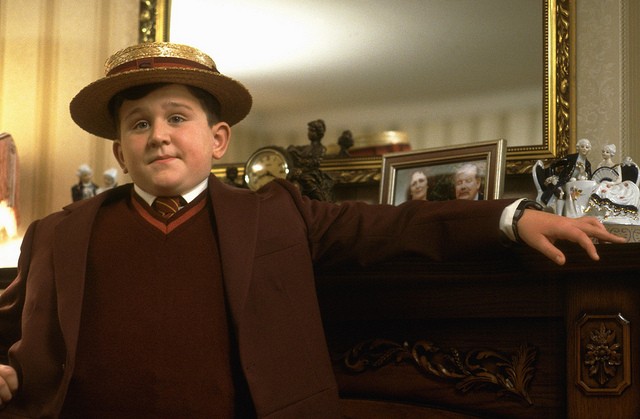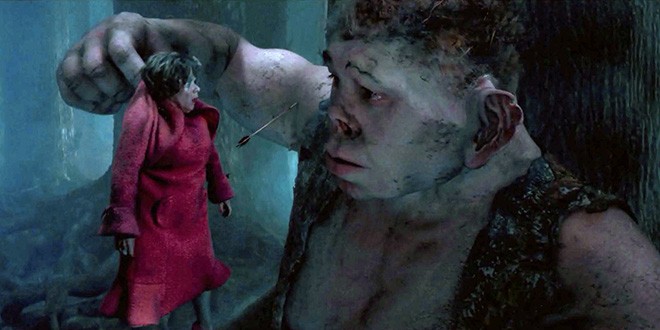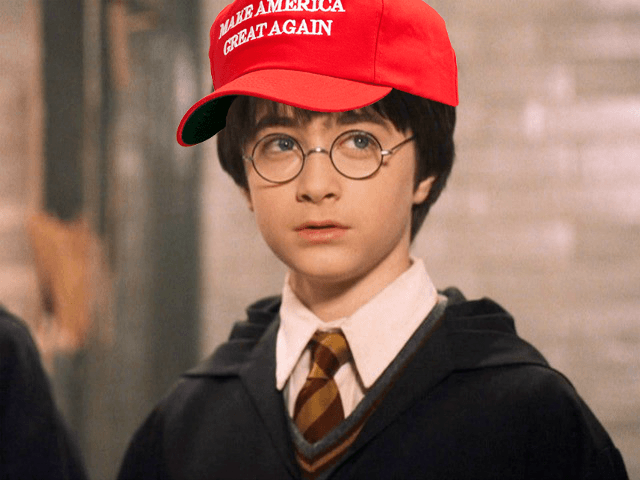Progressive icon J.K. Rowling has made a fool of herself on the tweeting machine again, this time going on a tirade about President Trump allegedly ignoring a wheelchair-bound child at an event, based on a selectively edited video clip.
https://twitter.com/jk_rowling/status/890997400290111489
A later video clip revealed Rowling’s furore to be nothing more than jiggery-pokery.
https://twitter.com/scratch_point/status/891016673012199424
It’s been two days, and the author has yet to alert her 11.4 million followers that she made a mistake.
I’ve written before about how Rowling’s public commitment to progressive values is a paradox, given that her famous books are so right-wing. My piece noted how the Harry Potter novels appear to support skepticism of Big Government and the mainstream media, a wizarding equivalent of the 2nd Amendment, and separation – including the construction of walls – between different cultures.
After I wrote my first piece, I received a storm of suggestions from readers and colleagues about further ways in which the novels are secretly right-wing — sometimes excessively so. With more than enough material for a follow-up, all that remained was to wait for Rowling to once more make a fool of herself on social media. The wait was not long.
Now, let’s apparate straight to the list.
1. Fat-shaming is good

‘You did not do as I asked. You have never treated Harry as a son. He has known nothing but neglect and often cruelty at your hands. The best that can be said is that he has at least escaped the appalling damage you have inflicted upon the unfortunate boy sitting between you.’
Both Aunt Petunia and Uncle Vernon looked around instinctively, as though expecting to see someone other than Dudley squeezed between them.
- Harry Potter and the Half-Blood Prince
At the start of virtually every Harry Potter novel, readers are (correctly!) reminded that being overweight is not a good thing They are taught this important lesson via the example of Dudley Dursley, Harry Potter’s morbidly obese muggle cousin.
Rowling follows in the footsteps of Roald Dahl, who taught kids about the dangers of gluttony through the character Augustus Gloop, whose greed causes him to fall into Willy Wonka’s chocolate river and sucked out by an extraction pipe. Like Dahl, Rowling is also fond of punishing her fictional fatties. In The Chamber of Secrets, the gluttonous antagonists Crabbe and Goyle are tricked into drinking a Sleeping Draught that was mixed into cakes. In The Goblet of Fire, meanwhile, Dudley brings chaos to the Dursley family home after eating one of Fred and George’s Ton-Tongue Toffees, which immediately enlarges his tongue by several feet.
You can tell that Rowling is a serial fat-shamer by the lurid, unattractive, and sometimes mocking way she describes the greed of her fat characters. Here’s her description of Crabbe and Goyle falling into Hermione’s trap:
Grinning stupidly, they stuffed the cakes whole into their large mouths. For a moment, both of them chewed greedily, looks of triumph on their faces.
And here’s a description of Dudley Dursley from The Goblet of Fire:
He thought it was a bit rich of Uncle Vernon to call anyone ‘dumpy,’ when his own son, Dudley, had finally achieved what he’d been threatening to do since the age of three, and become wider than he was tall.
And another, from The Prisoner of Azkaban:
Dudley came waddling down the hall, his blond hair plastered flat to his fat head, a bow-tie just visible under his many chins.
Tremendous fat-shaming from J.K Rowling, simply tremendous. Milo Yiannopoulos couldn’t do any better.
2. Tradition Trumps Modernity

Rowling presents the wizarding world as vastly superior to that of non-magical people (“muggles”), and in most regards it is.
Take transportation, for example. Wizards over the age of 17 can travel great distances instantaneously, a process called “apparition.” They also make use of the Floo Network, a system of magically connected fireplaces, as well as Portkeys — enchanted objects that transport wizards to particular places when they are touched at a certain time.
Wizards are also better at capturing memories than muggles. Photos and paintings in the wizarding world aren’t simply static reflections of their subjects; the people in the pictures can move around and talk, with character traits and memories much the same as those of their real-world counterparts. Wizards can also able to relive their own memories via the use of a magical device called a Pensieve, which puts Muggle video cameras to shame.
However, all is not as it seems. In many cases, Wizards choose to keep to old-fashioned, technically obsolete ways of doing things, despite the presence of far more efficient alternatives. Their primary method of communication, for example, is by owl post. Muggles stopped using pigeon post to communicate after the First World War, yet wizards are using an equally inefficient equivalent as late as the 1990s. They do have a method of instant communication, via the floo network, but this usually involves the uncomfortable process of bending down on a hearth and sticking your head into a fireplace.
Why don’t they just swallow their pride, admit muggles have surpassed them in this regard, and start using telephones and email? Some argue that magic interferes with electronics, but even walking down to the nearest payphone in a muggle down is more efficient than waiting for an owl delivery. Speaking of deliveries, characters in Harry Potter are frequently portrayed waiting several days for packages to arrive via owl, whereas muggle mailing services, as many of you know, can deliver packages in 24 hours or less.
We can only assume that wizards stick to their ways because the old way of doing things – tradition, in other words – is more important to them than efficiency. This is a very right-wing perspective. The same thinking that protects the skylines of certain historic western cities from efficient yet rootless globalist skyscrapers protects the wizarding world from muggle intrusions like telephones. Those who are interested in muggle systems, like Arthur Weasley, are largely seen as freaks and weirdos by their peers.
Even when muggles aren’t involved, wizards display a preference for tradition over efficiency. Students continue to catch the Hogwarts Express to school every year — an ancient steam train that takes a full day to reach its destination. Not only is it most likely outpaced by muggle aircraft and bullet trains, but the use of the Express seems entirely nonsensical when even underage wizards have access to Portkeys and the Floo Network.
Beyond transportation and communication, there are no signs of any progressive, “pro-change” movement in the wizarding world. There is no movement to ban school uniforms, as there is in the west. The traditional rivalry between the four Houses of Hogwarts is not denounced as toxic masculinity in action. Wizards return, year after year, to the same wandmaker (Ollivander), the same bookshop (Flourish and Blotts), and the same bank (Gringotts). No-one, save perhaps the joke shop disruptors Fred and George Weasley, tries to seriously shake things up.
There’s only one explanation: wizards like doing things the way they’ve always been done, because that’s the way they’ve always been done. They’re traditionalists!
3. Stereotypes are mostly accurate

The world of Harry Potter, for those blissfully unaware, is populated not just by wizards, but by all kinds of magical creatures. During his adventures, Potter encounters unicorns, centaurs, house-elves, goblins, giants, and even, at one point, a vampire. The tension between these groups is a major subtext of the series.
On the one hand, the heroes of the book, most notably the compassionate Hogwarts headmaster Albus Dumbledore, represent those who would see past stereotypes. Dumbledore is portrayed as an advocate of the rights of magical creatures, from house-elves to centaurs. Meanwhile, the villains of the series, like the giant-hating, centaur-hating Dolores Umbridge, are frequently portrayed as hostile to those who are not like them.
However, J.K. Rowling makes it perfectly clear that while there are exceptions to the ethnic stereotypes of the book, these stereotypes are still, on the whole, accurate. House-elves, for example, are the servant class of the wizarding world, a race of magical creatures who enjoy working in conditions that most humans would consider slavery. Hermione Granger, a muggle-born witch, is outraged by this, and even sets up a society (The Society for the Promotion of Elvish Welfare, or S.P.E.W for short) in order to do something about it. This is what happens when she attempts to convince the elves that they are being oppressed:
‘You’ve got the right to wages and holidays and proper clothes, you don’t have to do everything you’re told – look at Dobby!’
‘Miss will please keep Dobby out of this,’ Dobby mumbled, looking scared. The cheery smiles had vanished from the faces of the house-elves around the kitchen. They were suddenly looking at Hermione as though she were mad and dangerous.
- Harry Potter and the Goblet of Fire
Hermione’s attempts to liberate house-elves largely come to nothing, as she continually ignores how much the worker race enjoys servitude. Even Dobby, the supposed exception to this rule, talks Dumbledore down from giving him a pay rise and weekends off. While Dobby insists he enjoys freedom, he also admits that he enjoys work more.
The disturbing subtext of this is that if people are happy in conditions of slavery, there is nothing wrong with such an arrangement. The half-giant Hagrid, an expert on magical creatures, even goes so far as to tell Hermione that she would be doing house-elves an “unkindness” if she were to try and free them. This is remarkably similar to neo-secessionist revisionism, which argues that many slaves in the antebellum U.S. were happy, and should not have had their lives uprooted by the tyrannical yankees. Harry Potter is depicted in the lead image wearing a MAGA hat, but given the extent of Rowling’s extremism, perhaps a KKK hood would be more appropriate!
Other stereotypes of magical creatures are also shown to be accurate. Giants, even the ones who don’t join Lord Voldemort, are portrayed as universally violent and stupid. Grawp, the brother of half-giant Hagrid, is supposed to be the exception to this — but even he is portrayed as an idiot who can’t speak in full sentences, and who lashes out violently at anything that upsets him. Hagrid himself is a cautionary tale of the limits of tolerance: his insistence that dangerous magical creatures like giant spiders and dragons are actually just “misunderstood” and “harmless” almost always end in disaster. What is J.K. Rowling trying to tell us? At this rate, it’s only a matter of time before the darker elements of 4chan start referring to her as “/ourgirl/.”
You can follow Allum Bokhari on Twitter and add him on Facebook. Email tips and suggestions to abokhari@breitbart.com.

COMMENTS
Please let us know if you're having issues with commenting.